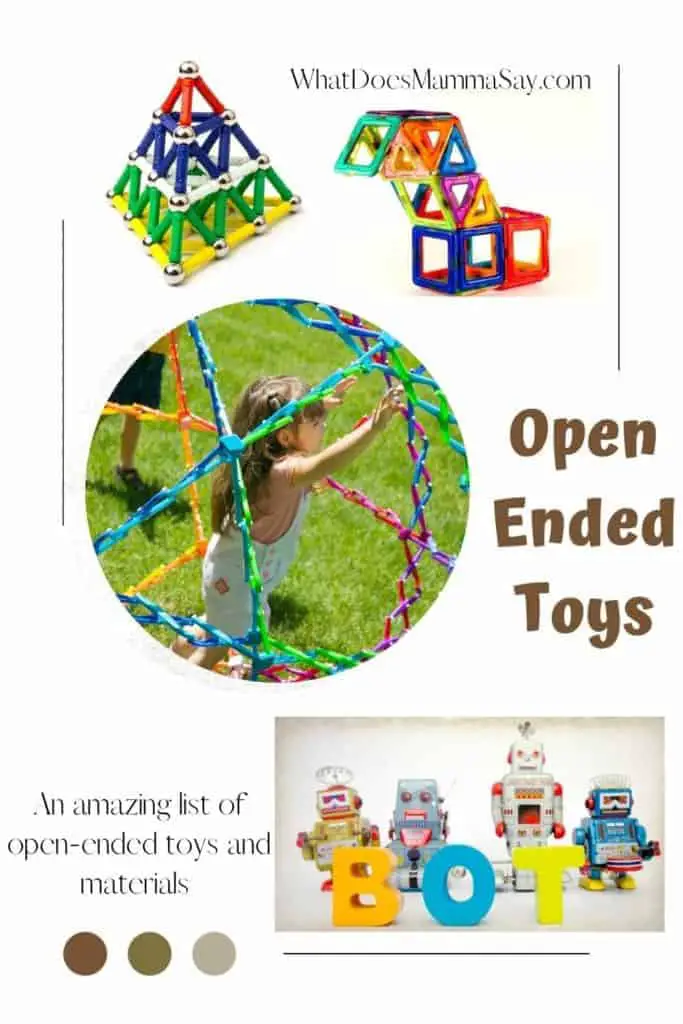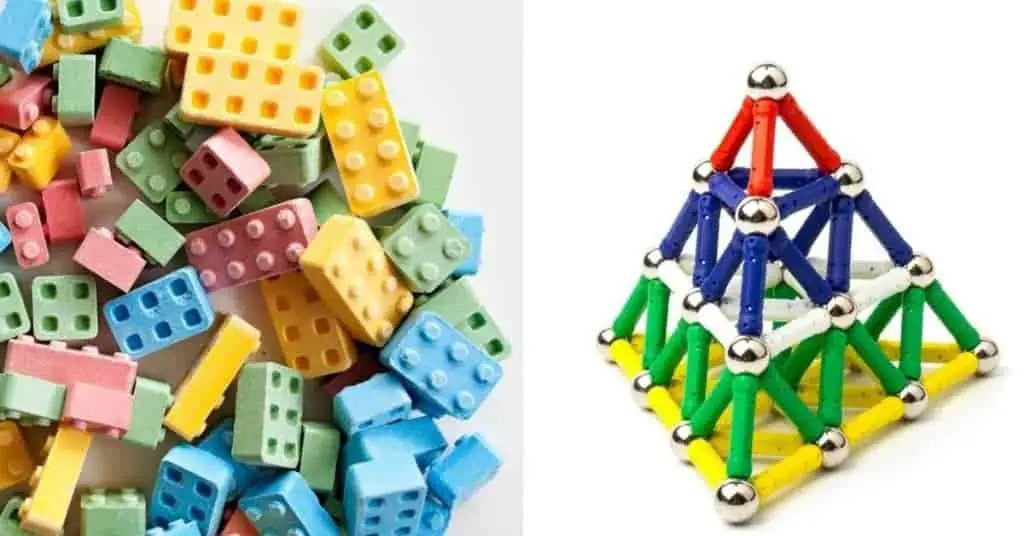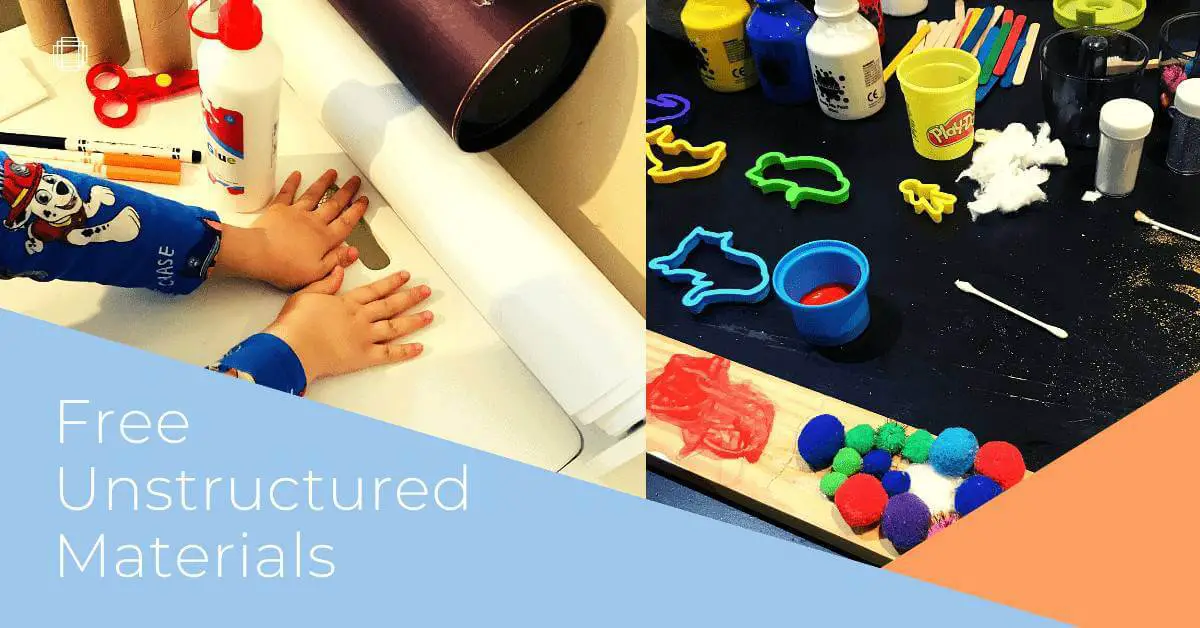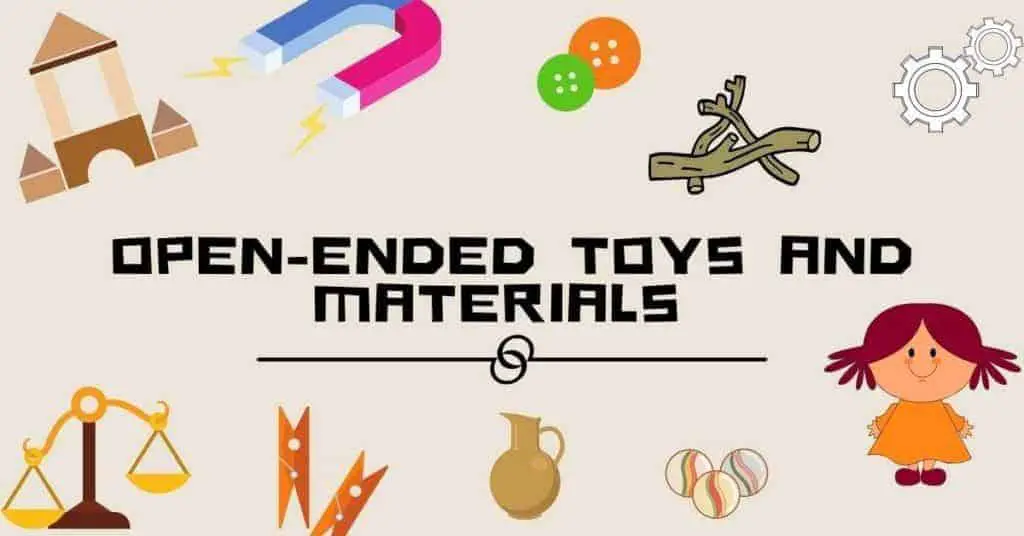Play is difficult to define because it can take endless shapes. Children can play with anything at any time, and play episodes evolve continually.
Roger Caillois defines two different ways of playing: ludus and paidia. Ludus is structured play, with rules, goals to achieve and mastery rewards. This type of play includes games such as play-and-seek, board games, sport games. Paidia however refers to free, unstructured and spontaneous play, based on improvisation. Open-ended play is somewhere between the two.

Even if we can associate open-ended play with free play, there are some subtle differences between paidia and open-ended play. Paidia can emerge at any time and any place, with anything, and does not require anything else but children’s imagination and initiative.
On the other hand, open-ended play is seen as “Play without predefined rules in which players can attach meaning to the design properties and the interactions themselves. Its goal is to trigger a player’s creativity by leaving room for interpretation” (Valk et al, 2013:97).
Open-ended play may start out as free play, but as it progresses it can even move toward ludus, a game with rules and goals, or it can shift back and forth between the two.

This post may contain affiliate links and I may earn a small commission when you click on the links at no additional cost to you. As an Amazon Affiliate, I earn from qualifying purchases. You can read my full disclosure here.
Open-ended play can also be described as rich play that changes over time in character, nature and form. Open-ended play is related to inquiry-based learning. Inquiry-based learning is associated with learners constructing knowledge through active exploration and investigation. Part of socio-constructivism, inquiry-based learning is something that I believe in and I’ve read extensively about it.
You can find more about inquiry-based learning as part of inclusive education in our next articles. Open-ended play is also closely connected to constructionism. Constructionism proposes that children learn best when involved in building meaningful artifacts (Papert, 1991).
Construction Open-Ended Toys
Based on this crafting process, constructive play involves minor parts assembled into a bigger holistic model. Some great construction open-ended toys could be: lego, construction sets, wooden magnetic blocks, magnetic tiles, magnetic sticks, K’nex, bible blocks etc.
Creative Open-Ended Toys
Children are born with creative potential. Open-ended toys stimulate creativity and broaden the imagination. Creative play involves sociodramatic play, constructive play, pretend play, all of which require time for planning and execution. Depending on the complexity of the story, children might require hours or days, so make sure you don’t rush them into anything.

When playing with open-ended toys children attempt to solve problems, thus encouraging creativity and problem-solving (Almon, 2003).
There is no right or wrong way to play with open-ended materials so children can easily achieve a sense of self-worth as they create something new. While playing with an open-ended toy children perform transformational operations (Mellou, 1995) a process closely linked to creative thought.
Storytelling wooden lacing blocks
Structured and unstructured materials for open-ended play
Children are intrinsically motivated to manipulate, explore, test, and learn as they encounter situations that provide such opportunities. An open-ended toy allows children “to mess about”, “messing about is when children act on the world and discover what they might be” (Greenman, 1988:27). But children need a rich environment to fuel their creative potential.
Open-ended materials are rich, interesting, have many possible outcomes, and can be enjoyed by anyone.
It is important to understand that there are structured and unstructured materials that we use in open-ended play. Structured materials have specialized components, wheels for example, and may require structured instructions.
On the other hand, unstructured materials are more generic and have unstructured instructions as you are using your imagination when building.
Both types of materials have benefits, but the difference lays in the feeling of achievement. When engaged in structured play children got a feeling of achievement for putting parts together.
However, when playing with unstructured materials, the children’s sense of achievement stemmed from an emotional connection to their construction (Tseng & Resnick, 2012).
Therefore, constructive play helps children focus and ultimately by inventing and discovering new possibilities, children fulfill their sense of purpose. Below you can find a list of unstructured materials I put together for open-ended play based on my collections:
Free Unstructured Materials for Play
- Pebbles
- Acorns/conckers/leaves/pine cones
- Sticks/twigs/logs
- Shells
- Seeds
- Shaving cream
- Homemade play dough/mud/sand
- Cardboard/Tubes

- Various containers around the house
- Bottle lids
- Different types of fabric
- Paper/string/cotton
- Painter’s tape
- Old newspapers/magazines
- Cork/paper plates/cotton balls
Cheap Unstructured Materials for Open-Ended Play
- Arts and Crafts Supplies
- Paper and collage materials
- Buttons/felt/pipe cleaners
- Paints/modeling clay
- Silkplay
- Loose parts for construction
- Large magnet and small magnetic parts
- Beads of various sizes
- Planks/ladders
- Wooden pegs
Interactive Open-Ended Toys
There are a variety of open-ended play designs out there that can serve as inspiration, for example ColorFlare, a flashlight-like object that when shaken or rolled can transmit its color to other ColorFlares in range when pointed in their direction.
Another example is FeetUp which consists of children’s shoes being embedded with pressure sensors and lights. Other open-ended interactive designs are Interactive Pathway, FlowerSteps.
You can look at interactive constructive play prototypes such as Craft, Click and Play and Topobo, Lusio, Zoomor.
There are also emerging materials, such as Graphene, which are being researched for the purpose of integrating digital and physical materials, which is amazing.
Lego explored the possibilities of merging conductive circuits and Lego bricks, there was even a workshop at the Lego World Fair. The purpose was to take advantage of the open-endedness of Lego bricks.
During the workshop, children were invited to build musical instruments using conductive lego in the form of lego bricks, copper tape, laptops and MaKey MaKey boards.

This type of constructive play offers space for free expression, allowing children to explore and also negotiate. It also stimulates their imagination and enhances open-endedness.
The pictures I’ve seen could only be described as inspirational. Children built their own interactive toys without rules whatsoever, it was all a matter of interpretation and imagination.
Companies that make open-ended toys
In a world that is constantly evolving, toys are no less of a change. They are becoming more and more engaging and at times it seems impossible to choose from such variety. My advice would be to opt for open-ended toys for 4 important reasons:
- open-ended toys encourage creativity, exploration, innovation and offer a strong sense of achievement based on an emotional connection to the artifact
- an open-ended toys can be used for long periods of time as they grow with the child, so over time they are a great investment
- open-ended toys are versatile so the child cannot get bored with them, they will use them again and again, and at various ages, according to abilities
- an open-ended toy encourages open-ended play, rich play, connected to inquiry-based learning, that leads to constructing knowledge actively and in innovative ways
As I started to read more and more about free play and Anji Play, I became interested in buying only open-ended toys for 3-year-olds as my son is 3 now. And after some longs days of researching the web, I came across these great companies that make open-ended toys and chose my top 8 favourites. Some may be very expensive, some not so much, but they all serve as inspiration for our play episodes and I do hope they can help you as well.
The Creative Play Club
The Creative Play Club is a research study done at a charted school in Pennsylvania in the form of an after-school programme. This club gave children the opportunity to play freely after school with an emphasis on hands-on activities.
Children were observed playing with wooden blocks, fabrics, bottle lids, and cardboard tubes.
The Creative Play Club draws on Reggio Emilia, Remida, the Creative Recycling Centre and Saturday Art Club. All of these perspectives value children’s choices and are centered around the belief that the knowledge children have inside is the most important and children need ample play opportunities to express themselves.
I chose the Creative Play Club as a perfect means to illustrate how simple, open-ended, even recyclable materials can be used to explore children’s creativity, freedom of expression, and choice.
Children gave life to imperfect materials through their endless exploration, cooperation, imaginative play, and creative skills. By using recycling materials they also learned to appreciate and show respect for the environment.
Conclusions
When buying toys we are tempted to choose the ones that have a predefined learning outcome. Although these have their value and help children develop skills, choosing open-ended toys and materials can have much more far-reaching benefits.
As argued above, open-ended toys help children explore freely, use their imagination and creative skills.
An open-ended toy promotes open-ended play, that encourages children to construct knowledge in innovative ways, and learn actively, while at the same time giving them a sense of self-worth. Also, an open-ended toy grows with the child and offer endless possibilities for play, they can be free or cheap and allow children space and freedom to express themselves through their “hundred languages” (Loris Mallaguzzi).
We share all of our ideas on our Facebook group
Learning Activities for Kids.

Hi. I am Monica, an experienced ESL teacher and early years student, mother to a preschooler and passionate reader.







Nice to read about open ended toys.I have bought similar toys for the kid.However I ddint know those are called as Open ended toys.Worth knowing al these details.
These sound and look like some great toys for kids. I know mine always loved blocks.
Thank you for such an informative post. I’m glad that I’ve bought my niece so many of these toys that can nurture her growth. Good to see some free things on here too.
These toys give me ideas for my grandbabies for when they get older. Many of them I think my teen boys would enjoy.
I really like those magnetic sticks for the kids but they are too expensive for us here in the Philippines 🙁
Open-ended toys seem to be a wonderful alternative to other toys! I think I’ll share this post with my friend, it may be useful for her and her child. 🙂
Open-ended play is needed to help children to invent solutions for the future of this world. Watching children play for hours can be such a delight.
Those are truly lovely toys for kiddos. Looks like you’ve influenced me to check on those.
It is always great to have some toys that really inspire creativity. These would make great gifts for my young niece and nephew.
I hate giving more plastic junk to kids, quality toys can absolutely be a tool for teaching and I love how you’ve laid out the different types of play. Open-ended toys are incredibly important to foster creativity and problem solving. This is such a great resource for parents…so no to junky toys!
Thank you for the recommendation on toys. I just got my 2-yr old Grandson some legos and he loves them!
I love toys that allow kids and even adults to fully use their imaginations. I think toys like these help create very creative people in the world who can problem solve just about anything ; )
It opens up opportunities to learn empathy, memory, flexibility, and self-regulation. Some children, particularly those on the autism spectrum, tend to play in a rigid, structured way. Modeling various ways to play with open ended toys allows them to benefit from learning these skills in a functional and natural way.
Pingback: How to Encourage Your Baby to Talk Sooner Rather Than Later